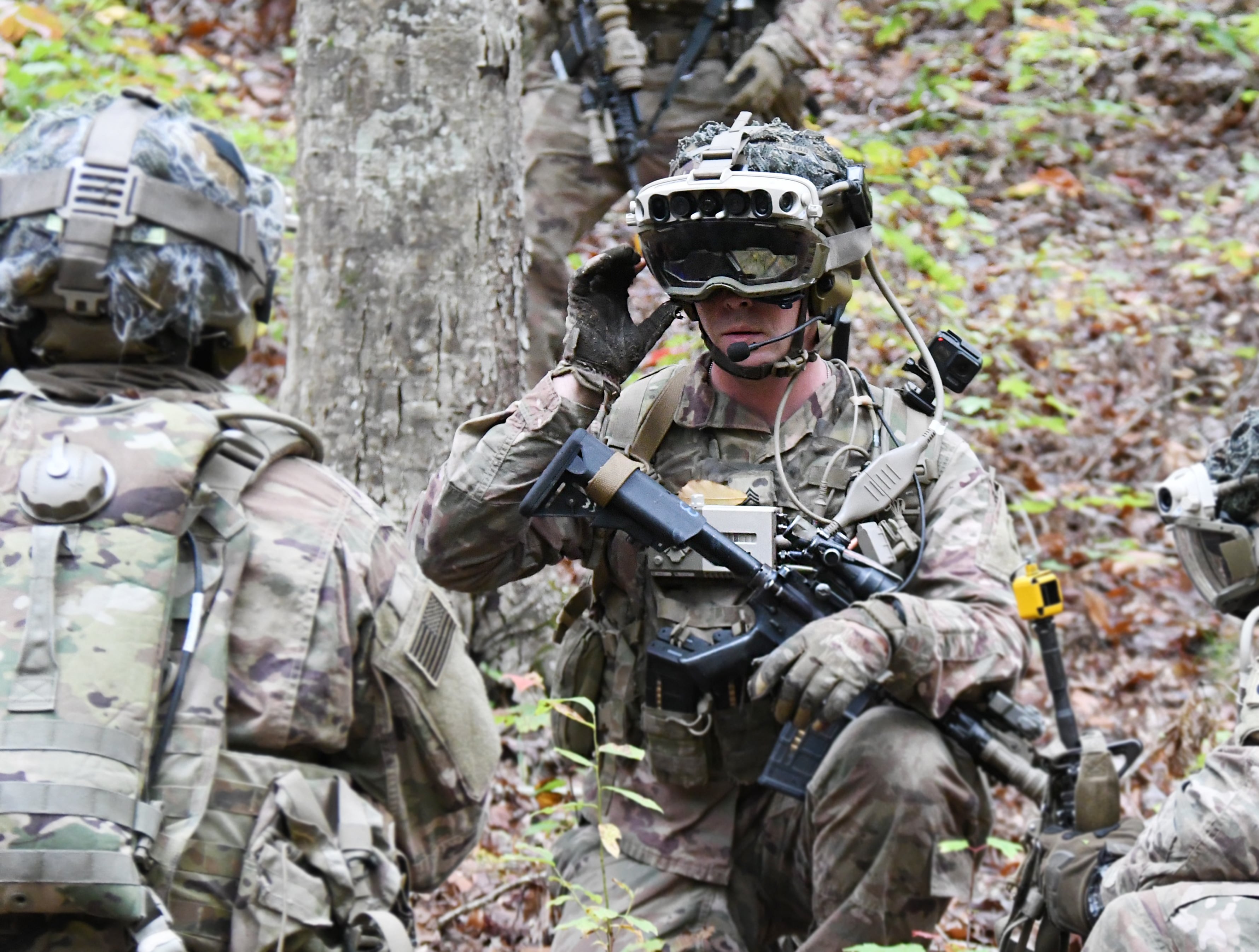The Army announced it has reached an agreement with Microsoft on a $21.88 billion, 10-year contract to produce its futuristic do-it-all goggle.
The program, the Integrated Visual Augmentation System, or IVAS, has been the centerpiece for future plans to integrate an array of technologies previously only available to fighter pilots or troops in vehicles to individual, dismounted soldiers.
The announcement made today by Program Executive Office-Soldier and Microsoft states that the program, which entered its early phases in 2018, will now move from prototyping to production.
RELATED

The goggle presents a mixed reality view that allows a soldier to use the same goggle to train, rehearse and fight on the same platform. It uses sensors that provide users with night vision, thermal or standard daytime optics.
The base device is a ruggedized version of the Microsoft HoloLens 2, using the company’s Azure cloud services.
“The program delivers enhanced situational awareness, enabling information sharing and decision-making in a variety of scenarios,” according to a company statement.
“Microsoft has worked closely with the U.S. Army over the past two years, and together we pioneered Soldier Centered Design to enable rapid prototyping for a product to provide Soldiers with the tools and capabilities necessary to achieve their mission,” according to the statement.
The goggle can also feed a wealth of information to the user, to include navigation aids, the location of friendly troops, weapons sights’ views, facial recognition software and augmented reality avatars for training scenarios.
The prototype version being used last year weighed 2.5 pounds, the same as the new Enhanced Night Vision Goggle-Binocular. The IVAS, however, has a design that reduces neck torque by holding the eyepiece closer to the face, officials told Army Times.
The system also records training scenarios that can then be used for instant after-action reviews, much like a replay in televised sports. Soldiers in the field for recent experiments have been able to see in the google view the video feed from a micro-drone they deployed themselves.
The goggle uses a tactical assault kit, which in recent testing was a Samsung Android smartphone, a conformable batter and radio. Running with all applications, the IVAS system battery lasts for eight hours of continuous operations, officials said.
It can also plug into larger networks and cloud computing to draw in more information but is capable of working without a connection.
The goggle then can sync with a company-level cloud, called the “bloodhound,” that processes the data and updates it with new information. The bloodhound then connects with the larger network or cloud when accessible.
In early work with the company Shield AI, developers are testing out 3D mapping scans of building interiors, which could be piped into the goggle, allowing a team to see the layout of a building before kicking down doors.
Early in the COVID-19 pandemic, researchers adjusted the sensing tech on the goggles, using them to detect from a distance whether soldiers were feverish.
Early plans have called for an initial purchase of 40,000 pairs of googles for the Army. The Marine Corps and special operations forces have also been involved in experimentation and testing with the device and are expected to field it as well.
Sergeant Major of the Army Michael Grinston gave the goggles a test run at Fort Belvoir, Va., last year and spoke with Army Times about the device.
“Half the battle is just knowing what the other squad members are going to do,” Grinston said. “Imagine integrating them in the matter of a week. You used to have to wait until a squad live fire.”
Also last year the Army ran a two-week training familiarization and test of the goggles that included a 72-hour training event in which an Army infantry company, a Marine platoon, support platoon and opposing force platoon ran live fires and multiple tactical squad tactics lanes at Fort Pickett, Va.
Todd South has written about crime, courts, government and the military for multiple publications since 2004 and was named a 2014 Pulitzer finalist for a co-written project on witness intimidation. Todd is a Marine veteran of the Iraq War.





